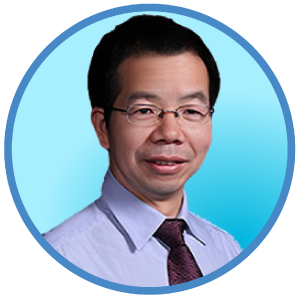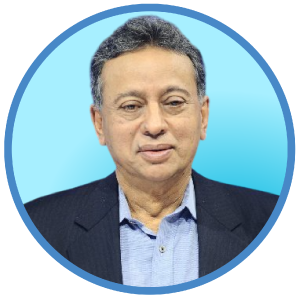Session 1: Economic Restructuring for Longevity: Nation-Building Strategies in the Age of Centenarians
As the global population ages, economies are facing significant shifts. The rise of an ageing society impacts labor markets, consumption patterns, and overall economic growth. Traditional economic models are being challenged as longer lifespans demand new approaches to work, education, and intergenerational collaboration. This session will explore how nations can adapt economic structures to support longer working lives and lifelong learning. We will also discuss the balance between AI and robotics versus job expansion for older adults, as well as the opportunities within the silver economy and innovations in business practices for an ageing workforce.Read More!
Discussion Questions:
How can nations restructure their economic and labor policies to support longer working lives and foster intergenerational economic collaboration in the age of centenarians?
How can policies and programs be designed to ensure that the benefits of the silver economy reach older adults across all income levels, not just the wealthier segments?
What innovations and strategies are emerging within the silver economy, and how can businesses adapt to meet the needs and leverage the strengths of an ageing workforce?
What are the potential conflicts and synergies between the adoption of AI and robotics in the workforce and the expansion of job opportunities for older adults?
Moderator:

Asst. Prof. Dr. Tobias Endress,
Assistant Professor of AIT School of Management at Asian Institute of Technology
Speakers:

Important points:
- The challenge of growing old before growing rich
He warned that countries like Thailand risk aging before achieving high-income status, which could lead to a growth trap. Economic and health policies must evolve in tandem to prevent long-term stagnation. - Limited room for increased taxation
In countries with already high taxation, additional taxes to support aging programs may be unfeasible. This necessitates creative financial models and productivity boosts to sustain public services. - Health and financial safety nets are critical
Universal healthcare (e.g., Thailand’s 30-baht program) and pension schemes are essential, but funding challenges remain. Stronger fiscal planning is required to ensure long-term viability. - Encouraging work past age 60
Many elderly citizens are willing and able to work past the traditional retirement age, yet societal norms and regulations often block this. Policies must evolve to support flexible work for seniors. - Ensuring inclusivity across income levels
Policies must not disproportionately benefit wealthier seniors. Programs should provide support across all income levels, ensuring dignity and access for lower-income elders. - Intergenerational programs enhance resilience
Highlighted the value of programs that engage both youth and seniors—community-based projects and part-time work schemes help bridge generational divides and foster mutual support.
1. Prof. Dr. Suthiphand Chirathivat,
Professor Emeritus of Economics, Chulalongkorn University, Former Executive Director of ASEAN Studies Center and Chairman of Chula Global Network

Important points:
- Lifecycle investment strategy
He stressed that governments should plan and invest across the entire human lifecycle—not just at retirement. Planning should begin at birth to ensure maximum returns from citizens over time. - Revenue generation is foundational
Any longevity-focused policy requires funding. Pension systems, healthcare, and social welfare need a strong tax base, meaning governments must focus on increasing labor productivity and tax collection. - Shift from business-as-usual to reform
Addressing the scale of aging challenges requires rethinking traditional economic models. Governments must recalibrate policies and abandon outdated practices. - Outcome-driven education systems
Education should prepare citizens for economic contribution. Vocational training, STEM education, and industry-aligned programs can ensure all age groups contribute productively. - Reskilling and upskilling aging populations
To derive a "longevity dividend," senior citizens must remain part of the productive workforce through continuous education and vocational reintegration. - Human capital is central to national development
As aging accelerates, national strength will depend on how adaptable and skilled the population is at every stage of life.
2. Prof. Huang Ronghuai,
Dean of Smart Learning Institute of Beijing Normal University, Director of National Engineering Research Center for Cyberlearning and Intelligent Technology, China

Important points:
- Lifecycle investment strategy
He stressed that governments should plan and invest across the entire human lifecycle—not just at retirement. Planning should begin at birth to ensure maximum returns from citizens over time. - Revenue generation is foundational
Any longevity-focused policy requires funding. Pension systems, healthcare, and social welfare need a strong tax base, meaning governments must focus on increasing labor productivity and tax collection. - Shift from business-as-usual to reform
Addressing the scale of aging challenges requires rethinking traditional economic models. Governments must recalibrate policies and abandon outdated practices. - Outcome-driven education systems
Education should prepare citizens for economic contribution. Vocational training, STEM education, and industry-aligned programs can ensure all age groups contribute productively. - Reskilling and upskilling aging populations
To derive a "longevity dividend," senior citizens must remain part of the productive workforce through continuous education and vocational reintegration. - Human capital is central to national development
As aging accelerates, national strength will depend on how adaptable and skilled the population is at every stage of life.
3. H.E. Amir Khosru Mahmud Chowdhury,
Former Minister of Commerce of Bangladesh

Important points:
- Economic growth with fewer people is possible
Mr. Thibault raised a provocative question: Can economies grow with a shrinking population? He cited Japan, which experienced a population decline of nearly 1 million in 2024, as a test case. Traditional economic models assume growth via population expansion (demographic dividend), but he suggests prosperity might now come from productivity and technological innovation. - Need to reform inheritance systems
In aging societies, people often inherit wealth too late (in their 60s or 70s), by which time they no longer need it. This stalls economic dynamism. Thibault proposed reforming inheritance systems to transfer assets earlier or in part, so younger people can invest and stimulate the economy. - Unlocking dormant capital from deceased estates
Billions in unclaimed bank accounts are left behind by deceased individuals, particularly in Japan and the UK. He highlighted ongoing policy ideas to reclaim this dormant capital after a waiting period (e.g., 10 years) and redirect it into public funds supporting aging populations and social innovation. - Impact investing in the silver economy
Mr. Thibault shared how DBS Bank launched a successful aging-focused impact investment fund in Singapore. Initially $50 million, it's being expanded to $1 billion due to its success. The fund finances startups providing services and solutions for senior citizens. - Role of AI in elder engagement
AI can help seniors stay mentally and socially engaged by enabling them to use tools like smartphones, translation services, and online learning platforms. He shared personal examples of elderly individuals mastering digital tools, highlighting their potential to stay active and connected. - Community-driven solutions over tech-only approaches
Mr. Thibault emphasized that many silver-economy startups succeed not just due to high-tech solutions but because they focus on building meaningful communities, combating isolation, and supporting mental well-being.
4. Mr. Thibault Danjou,
International Consultant, Member of the Investment Committee of Phitrust Asia, Expert for the European Commission, MBA University of Chicago

Important points:
- Mindset matters in aging
Mr. Russell spoke about personal responsibility and behavioral aspects of aging. While biology is fixed, mindset influences how we age. Staying mentally and socially active makes a major difference in quality of life. - Thailand's national longevity blueprint
He outlined Thailand's five-point longevity strategy: extending retirement age to 65+, introducing labor-saving technologies, national reskilling programs, urban redesign to support elderly needs (transport, greenery, healthcare), and improved financial literacy and savings culture. - Leveraging low-hanging policy fruits
Mr. Russell noted that many impactful policies are already in place but underutilized. Examples include Thailand’s flexible work arrangements and the AIT's hiring practices allowing older adults to stay engaged through part-time, project-based roles. - Intergenerational collaboration as a strategy
He advocated for cross-generational partnerships in workplaces and communities, where younger generations bring energy and tech-savviness, while older adults offer wisdom and experience. - Reskilling through digital tools
Emphasized the importance of reskilling seniors through platforms like ChatGPT and Perplexity. Seniors can maintain productivity and relevance if they adopt these technologies. - Corporate innovation for aging workers
Cited BMW’s efforts to retain older workers by redesigning work environments (e.g., installing wooden floors, ergonomic stations), showing innovation doesn’t always require high-tech solutions but thoughtful redesign.
5. Mr. Russell B. Rein,
Vice President for Administration at Asian Institute of Technology
